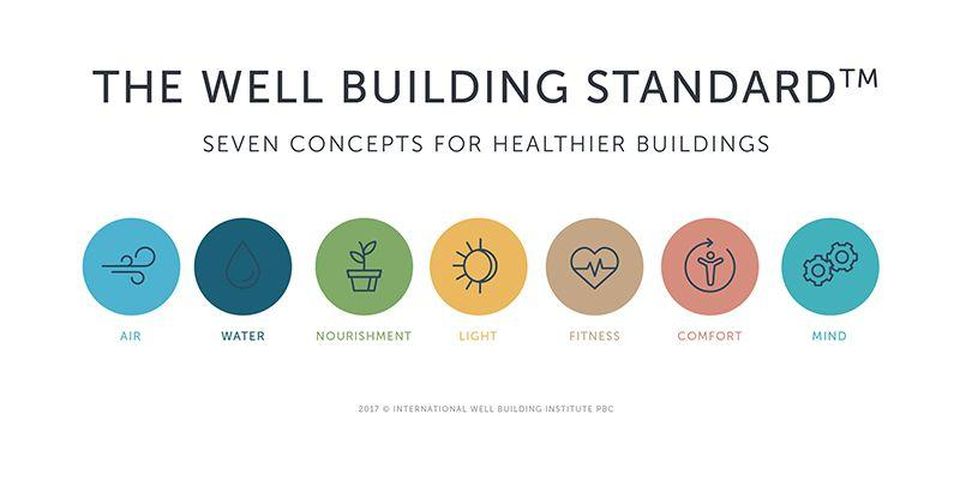The home of smart buildings, smart equipment and IoT

There are a number of metrics that can be associated with a building’s performance. Energy efficiency, operational & maintenance costs, environmental impact, and equipment diagnostics are just some of the metrics used in the industry. But there’s one metric growing in popularity you should also be considering: occupant comfort. What is occupant comfort and why is measuring it necessary? In Part 1 of this three-part series we will explore its importance and the factors that play into this metric. In Part 2, we will discuss how building automation systems can measure and increase occupant comfort. In Part 3 we will look at factors to consider in order to maintain the comfort and safety of occupants during this pandemic.
Why should facilities managers and building owners care about the comfort of occupants when other building metrics seem to be more important for the bottom line? Employers need to care because comfort levels have a direct impact on productivity, employee retention, and wellness - all factors that affect the bottom line when the costs of absenteeism, health insurance and employee attraction & retention are factored in.
Building occupants who face multiple distractions by poor use of space, unnecessary noise, or uncomfortable conditions like poor lighting, temperature or air quality become less productive over time and tend to dread coming to work. But an environment that promotes employee well-being can have a significant positive impact.
As a facility manager or building owner, paying attention to occupant comfort can actually help with energy consumption and help retain the businesses who use or rent your space. Even if they aren’t your employees, consideration of occupant comfort is a growing trend and thus an influencing factor for businesses looking for office space.
The purpose of a building is to provide a safe, secure, and healthy working environment. If your building’s energy savings are prioritised over occupant comfort then there is a risk that your building is not actually serving its core purpose. It may seem counterintuitive that making everyone comfy will help with energy conservation, but studies have shown that energy performance and occupant comfort actually go hand-in-hand.
Building energy performance metrics provide information regarding the rate of consumption of energy resources however, they don’t tell you the effectiveness of the energy. Occupant comfort metrics can validate the functional performance of a space to ensure your building is serving its primary purpose.
Occupant comfort refers to a building’s ability to provide a healthy environment that promotes performance and productivity. This includes taking into account the following factors: aesthetics, lighting, acoustics, air quality, temperature, and overall satisfaction.
Believe it or not, aesthetics matter. Color psychology studies have proved that the colors in your environment can affect mood. For example, yellow has been proven to raise anxiety levels while blue can have a calming effect. There’s also a correlation between a drab environment and a curated one that stimulates creativity. A study done by the American Society of Interior Designers confirms that design impacts the experience people have in your space.
Nature should also play into the aesthetics of your space. Biophilia refers to our human impulse to be connected with nature. Plants can not only help absorb sound and filter air, they can also increase productivity. A study done by University of Technology Sydney (UTS) showed a 30-60% reduction in stress levels and negative feelings. This all adds up to increased performance and well-being.
It wasn’t that long ago we discovered how terrible fluorescent lighting can be for your health. But beyond the conversation of LED vs. fluorescent, bad lighting in general is a big factor for occupant comfort. Poor lighting, lack of natural light, screen glare, and poor choice of lights can affect mood and cause eye strain, headaches, and drowsiness. All of these side effects can lead to lack of focus and lower overall performance.
In addition, Seasonal Affective Disorder (SAD) can be aggravated by lack of natural light. Spending eight hours a day inside with no natural light can affect mental cognition and mood. This is why the type of lighting you choose and the color of the light is important as well. Daylight bulbs can be used to mimic natural lighting in areas where there are no windows. Personal lights and desk lamps rather than overhead lighting can help reduce glare. There are lots of factors to consider when it comes to lighting design. Allowing occupants to adjust the lighting near their space also helps.
Workplace noise can be a huge barrier to comfort and productivity. It breaks concentration and can increase stress levels, making your employees want to flee the workplace for a more private and quieter space. Research from Ipsos and the Workspace Futures Team of Steelcase office found that office workers lose 86 minutes a day due to distractions.
There are plenty of solutions to reduce office noise. A well designed sound system, white noise makers, sound dampeners, creating quiet nooks and phone booths - even having plants throughout the office can help.
Is your indoor environment polluted? When was the last time you checked? According to OSHA, poor indoor air quality (IAQ) has been tied to symptoms like headaches, fatigue, trouble concentrating, and irritation of the eyes, nose, throat, and lungs. There are multiple factors that can contribute to poor air quality. Poor ventilation due to lack of outside air, humidity levels due to poor temperature control, construction debris, mold, cleaning products, etc. The ASHRAE 62 Standard contains specific design procedures and guidelines for ventilation rates for indoor or enclosed spaces. Failing to follow these standards could lead to health problems and a poor office environment. Here is more information on air quality and room automation by SIEMENS, available for free download.
Thermal comfort is one of the biggest factors when considering the occupant comfort of your building. It’s crazy that employees have to bring sweaters to the office during the summer because the air-conditioning is cranked up to cool down the building - or shed multiple layers in the winter because the heat is blasting them. But how do you make everyone happy when you have multiple zones and levels of comfort to contend with? One way is to give occupants the ability to adjust the temperature of their immediate surroundings, via their PC browser or mobile.
Occupant control is just one piece of the solution. Radiant temperature from natural light, humidity, and airflow all impact thermal comfort. The best place to start when it comes to thermal comfort is to ensure that your building follows ASHRAE Standard 55. This standard specifies conditions for acceptable thermal environments and is intended for use in design, operation, and commissioning of buildings and other occupied spaces.

We’ve mentioned ASHRAE Standards already. But there’s another Standard to consider when looking into occupant comfort: the WELL Building Standard. This certification program measures and quantifies wellness to improve the occupant experience. It goes beyond the above factors to include your building’s water purity, ability to access nutritious foods, options that encourage movement, and comfortable, ergonomic work areas.
So how does your Building Automation Software address, measure, and manage these seemingly subjective factors to increase occupant comfort? Check out Part 2 in our series.
See here for more on building comfort
Chris is a J2 Innovations consultant who originally joined J2 in 2018 to develop sales in Europe, the Middle East and Asia. Chris comes with a wealth of experience in the building automation market and skills in strategic business development and marketing. Chris spent 12 years developing Tridium's open framework business in Europe, so he is excited to be now working with the next-generation product. Chris is passionate about simplicity, energy saving, renewable energy, and electric transport.
Topics from this blog: FIN 5.0 Comfy App IoT Smart Buildings
Back to all posts
J2 Innovations Headquarters, 535 Anton Blvd, Suite 1200, Costa Mesa, CA 92626, USA. Tel: 909-217-7040